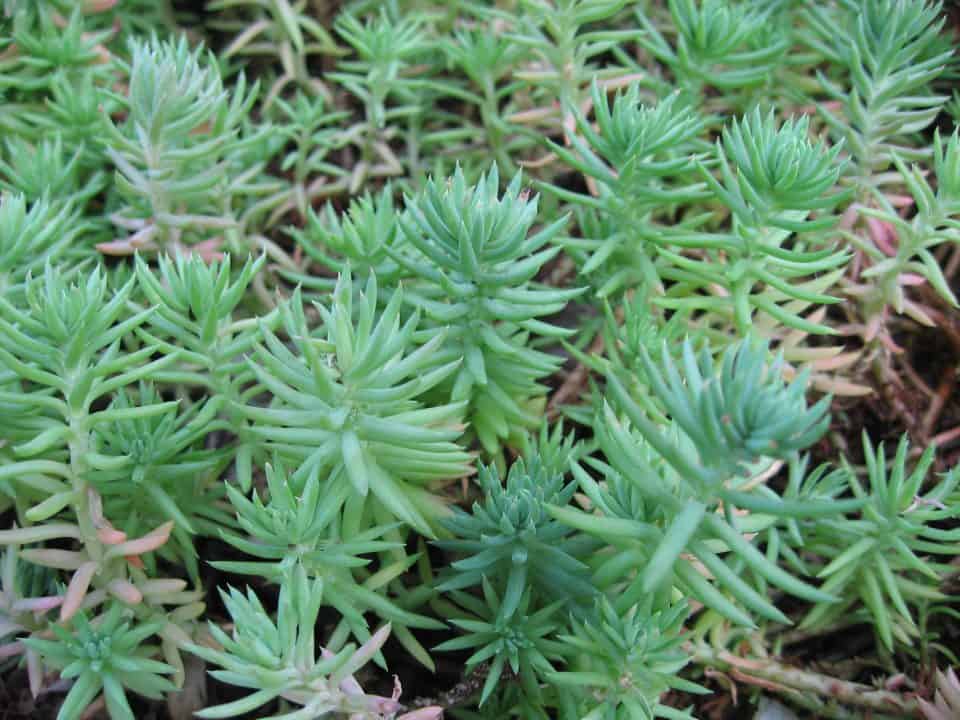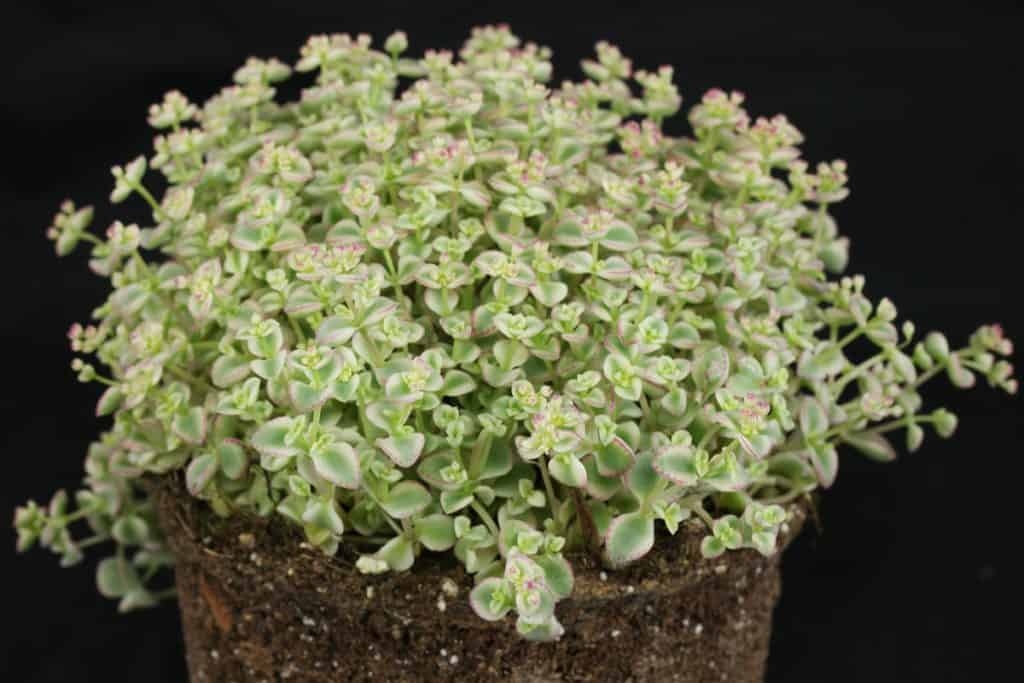Sedum reflexum, also known as blue spruce stonecrop, jenny’s stonecrop, Sedum rupestre, or reflexed stonecrop, is an evergreen ground cover that thrives in moist conditions, making it ideal for the shady and damp areas of your yard. It grows to around eight inches high and spreads to 10 inches across, so it can help fill in bare patches between trees, shrubs, and other plants.
It works well as an edging plant along walkways, as well as by patios, and retaining walls. This hardy succulent performs best in the U.S.
The blue spruce stonecrop is an extremely hardy ground cover that grows in the shade. Although it’s best grown in USDA zones 3 through 8, those in warmer climates can still enjoy this low-maintenance plant. It is tolerant of many different kinds of soil and grows rapidly without requiring much care or extra attention from its owner.
Sedum reflexum is a perennial ground cover that grows best in USDA zones 5 to 9 and requires very little maintenance once established. It thrives in full sun or partial shade prefers moist but well-drained soil and can reach up to 4 inches tall when fully mature. This herbaceous perennial is best planted in early spring and will last for years without needing repotting or pruning.
Sedum reflexum propagation
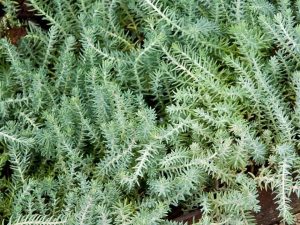
Sedum reflexum can be propagated by stem cuttings or leaf cuttings. The recommended time for taking the cuttings is in early spring before the plant has grown too large. Take a 4-inch-long stem tip cutting with a sharp knife, dip it in rooting hormone and stick it into moist potting soil.
Keep in indirect light and wait patiently until you see new growth emerge from the cutting. If you want to propagate your jenny’s stonecrop by leaf cuttings, then use a sharp knife to make a 5-inch-long sliver of leaves from the plant’s center point. Dip the cut end in rooting hormone and place it on top of its own roots in an open plastic bag filled with moistened peat moss. Leave it there for three weeks before planting outside during its last frost date.
Sedum reflexum care information
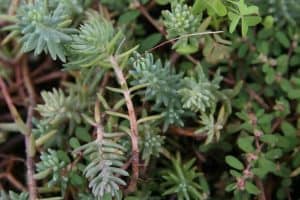
Sedum reflexum, also known as blue spruce stonecrop or reflexed stonecrop, is a succulent plant that is part of the Sedum genus. This plant is easy to care for and can be propagated easily from stem cuttings.
Light requirement
This plant prefers full sun but will tolerate some shade. It’s a good idea to give it some afternoon shade in hot summer climates because its leaves are sensitive to heat and can get burnt if they are exposed too long.
Soil/potting mix
This succulent prefers a gritty, well-drained soil mix. You can make your own by mixing together one part perlite or sand with two parts potting soil. If you’re using a store-bought mix, look for something labeled cactus and succulent mix. Sedum rupestre reflexed stonecrop is a low-growing succulent that’s perfect for pots and gardens.
Watering
Blue spruce stonecrop does best in dry to medium moisture, well-drained soils in full sun. It is tolerant of a wide range of soils, including clay. It will not tolerate wet soils. If the soil is too dry, the leaves will curl and the plant will go dormant. If you give it too much water, the leaves will turn yellow and fall off. The best way to water this plant is to let the soil dry out completely between watering.
Fertilizer
Fertilizing your sedum reflexum (blue spruce stonecrop) is important to encourage growth and blooming. You can use a balanced fertilizer, such as 10-10-10, or a fertilizer with a higher middle number, such as 8-16-8.
Apply the fertilizer around the base of the plant, taking care not to get any on the leaves. Water the plant well after applying fertilizer. Fertilize your sedum reflexum every four to six weeks during the growing season.
Temperature
The optimum temperature for Sedum reflexum is between 15-18 degrees Celsius. They can tolerate temperatures as low as -15 degrees Celsius but will not flower at these lower temperatures. If the temperature exceeds 18 degrees Celsius, the leaves will start to turn red. The flowers will also start to wilt and the plant will go into dormancy.
Humidity
Sedum reflexum, or blue spruce stonecrop, is a succulent that grows best in humid environments. The plant prefers high humidity and can tolerate lower humidity levels, but will not thrive in dry conditions.
If the leaves of the plant begin to turn brown and curl, this is a sign that the air is too dry and the plant needs more moisture. To increase the humidity around your sedum reflexum, you can mist the leaves with water or set the pot on a tray of pebbles and water.
The ideal humidity range is between 40-70%. Sedum reflexum has a tough, waxy surface and tends to repel water as it dries. However, if the leaves are damp for an extended period of time they may develop powdery mildew.
When planting your sedum reflexum, it’s important to keep these two things in mind: placement and drainage. The plant should be placed in an area where it will receive plenty of sunlight but will also get plenty of airflow.
Pruning
Sedum reflexum is a fast grower and can quickly become leggy and unruly if not pruned regularly. Pruning Sedum reflexum is easy and only requires a sharp knife or pair of scissors. Simply cut off the leaves that are getting too long or that are dying. You can also remove any offsets (baby plants) that you don’t want.
Cut them right below the root ball, leaving about 3 inches (7.5 cm) of stem above the soil surface. If you’re planning on dividing your sedum, prune at least two stems per division to make sure it grows well. Make cuts one inch (2.5 cm) below the crown with a clean knife.
Make sure to loosen up the soil before planting, so that water drains freely from around the roots.
Sedum reflexum will flower in early summer for about six weeks and then stop flowering for about four months before starting again in late fall when cool weather arrives. These blooms are generally pink or purple with white margins.
When to repot
You’ll know it’s time to repot your sedum reflexum when the plant becomes pot-bound, meaning the roots have filled up the pot and there’s no room for them to continue growing.
The plant may also start to look unhealthy, with yellowing leaves or stunted growth. If you see either of these signs, it’s time to give your sedum a new home. To ensure that you provide the best environment for your plant, place a layer of pebbles at the bottom of the pot to improve drainage.
Next, add a mixture of soil and peat moss as an anchor layer. Fill up the rest of the pot with more soil and allow it to settle before placing your sedum in its new home. Make sure not to overwater, since this can lead to root rot. Place the pot somewhere bright but away from direct sunlight, where it will get plenty of airflows.
Dormancy/Winter rest
Sedum reflexum is a succulent that goes dormant in the winter. This means that the plant will stop growing and will not need as much water. The plant will also start to shed its leaves.
During this time, it is important to not fertilize the plant or disturb its roots. Once spring arrives, the plant will start to grow again. It will be hungry for more water than during the dormant period. It is a good idea to gradually introduce more fertilizer into the soil over time. If you do too much too soon, you can burn the roots of your sedum reflexum.
Sedum reflexum flower & fragrance
The flowers of Sedum reflexum are small and star-shaped, and they range in color from white to pink. This plant is not known for its fragrance, but the leaves do have a slightly minty smell. The leaves are also said to have a bitter taste.
Growth rate
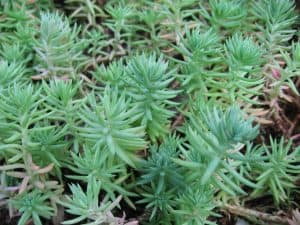
Sedum reflexum is a slow-growing succulent that can reach up to 6 inches in height. This stonecrop is perfect for rock gardens and as an accent plant in mixed succulent arrangements. Its blue-green leaves are needle-like and give Sedum reflexum its common name, Blue Spruce Stonecrop. This stonecrop blooms in the summer with yellow flowers.
Toxicity
Sedum reflexum is not considered to be toxic to humans and animals. If you suspect your pet has ingested sedum reflexum, please contact your veterinarian immediately.
USDA hardiness zones
Sedum reflexum grows best in USDA hardiness zones 4-7, so gardeners should be cautious when planting this species outside of those zones.
Pests and diseases
Blue spruce stonecrop is a succulent that is susceptible to mealybugs and root rot. Mealybugs are small, white insects that feed on the sap of plants. They can be controlled with horticultural oil or insecticidal soap.
Root rot is a fungal disease that can be caused by overwatering or poor drainage. It can be treated with fungicides. Sedum reflexum is tolerant of drought but prefers moist soil conditions. It grows best in full sun and needs to be planted in well-drained soil.
